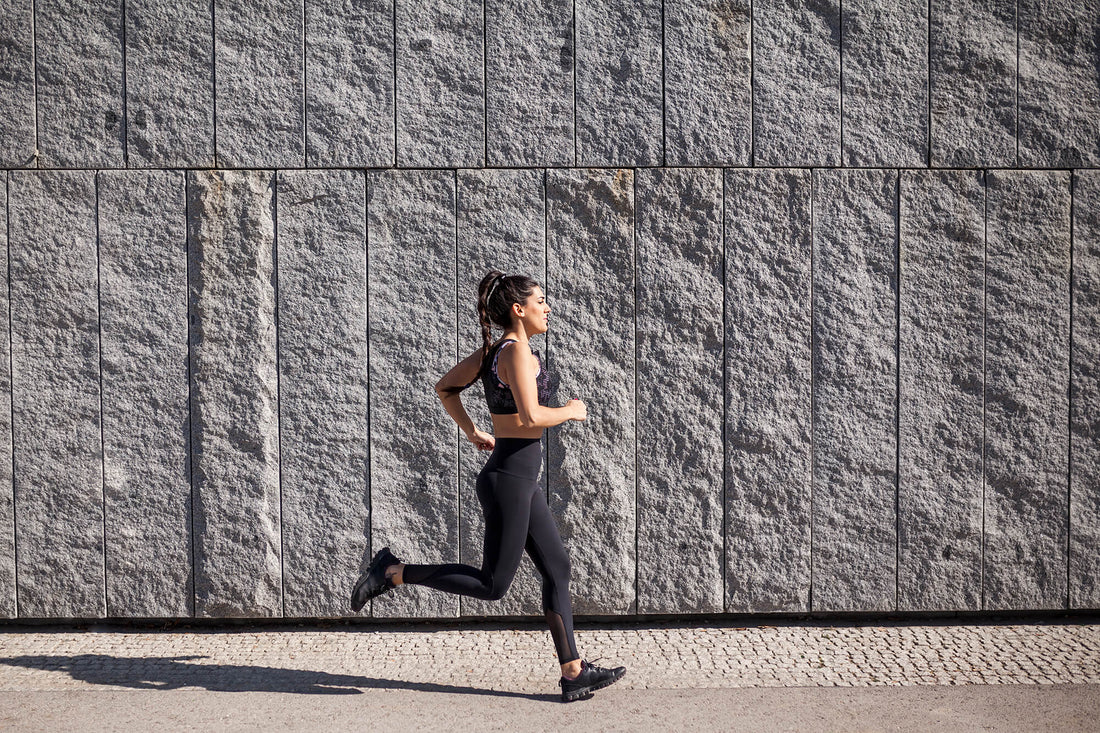It’s safe to say most people don’t think about their feet. And why would we if they are successfully getting us from A to B? I have a few very good reasons why you might want to pay a little more mind to yours. Blisters, cracked skin, foot odour, blackened toenails, lost toenails, the list goes on.
If you are experiencing foot pain or one of the many little niggles that haunt regular runners, you’re in the right place. At The Feets, we’re all about preventative, active foot care that will keep your feet on top form in order to achieve all the goals you have set for yourself - you can find out more in my initial post about what active foot care is.
If you’re wondering what you can do right now to prevent future foot problems, here’s everything you ever needed to know about helping your feet to keep you moving.
Why should runners be paying more attention to our feet?
I’ve had it all; Athlete’s foot, blisters, foot pain, a rolled ankle. My feet have been through a lot, and I continue to put them through a lot, as do many of us. A few years ago I started to take my foot health more seriously with a holistic approach to training, which has changed the game for me.

According to studies, around 70-80% of running disorders are due to overuse injuries, often involving the feet. In fact, the ankle is one of the most frequently injured sites among ultramarathon runners, accounting for 34.5% of injuries, and even for non-ultramarathon runners the feet/toes and ankles are the 3rd and 4th highest proportion of injury locations, respectively.
Regardless of the injuries they can sustain if not looked after properly, our feet can make or break a run. If they are uncomfortable or sore in any way, it can be extremely hard to ignore the discomfort in order to endure a run and maintain good running form. And poor running form can lead to injury.
For this reason, I believe that a short amount of time each day spent looking after our feet could be the difference between us achieving those PBs, or sitting at home complaining that our training has been interrupted. Worth the 5 minutes of preventative foot care? I’d say so. Give your twinkle toes some TLC…
Proper running (and every day) shoes
“Every day you’ve got running shoes on, it’s a good day.” - Sean Astin
There is so much to say about the importance of running shoes, and we’ll be publishing a whole article on how to choose the right ones for you in future. For now though, here’s a brief overview of why the right running shoes are so important.
With running shoes, it’s not about getting the best or the most expensive brand of shoes. Far more important than the name and logo on the side is the fit. Long distance running in a shoe that doesn’t properly fit your foot size and shape can cause so much more than a few blisters, it could be doing long-term damage and risking serious injuries.

As well as the fit, think about the ‘stack’, meaning the height of your foot from the ground. I have learned the hard way about the running stack needing to match the terrain. I almost broke my ankle running on technical trails with a very high stack (I won’t name the brand because the shoe was amazing, just not for these trails). The high heel means a very high pivot to roll your ankle, so I moved to a lower stack shoe. And I have not rolled my ankle as badly since.
There are lots of other things to consider about your feet when choosing running shoes, so keep an eye out for our upcoming article on how to choose the best running shoes for your feet and the type of running you plan to do.
A few other things to keep in mind:
- Over time, shoes can shrink when wet, become misshapen, and wear out, so try to replace running shoes regularly. Research recommends doing this every 300-1000km.
- Don’t stick to the same shoe. Get re-measured every time you need new shoes, as your feet can change shape over time.
- Store your shoes indoors at room temperature, and avoid leaving them outside in the cold or drying them on the radiator. This can cause them to shrink.
- If you do a lot of outdoor running in muddy, wet terrain, waterproof trail-running shoes could be a great idea for you to avoid foot issues resulting from damp feet.
- Put wet shoes in the airing cupboard after every run. Dry them out to stop all that mould and bacteria from growing.
Top Tip: Pay attention to the shoes you wear when not running, too, and invest in good ones to ensure long-term foot health.
Socks for running in
“I never leave home without a nice pair of socks.” - Benjamin Franklin
Socks tend to be an afterthought when we plan our running gear. We pull on some basic socks and slip into our shoes to get out the door, but in fact, badly fitting socks can have just as much of an impact on our feet as the wrong shoes can, and are a major cause of blisters.

When you are looking for running-appropriate socks:
- Look for form-fitting socks that are snug to your feet without being too tight.
- Once you find a pair that works for you, stock up on a few pairs so you have a regular change, especially if running in wet and muddy areas.
- Experiment with different sock needs at different times of the year. Chances are you will want thicker ones if running in cold weather in winter, and vice versa in summer.
- Don’t be tempted by re-wearing damp socks just to save on washing. This is a major cause of fungal infections and Athlete’s foot, so always stick to breathable, moisture-wicking socks and make sure they are clean and dry before you wear them.
- Try both toed and toeless socks to see which works for you over various distances.
Top Tip: Did you know you can use antiperspirants on your feet? This can help with everything from smelly feet, to keeping them dry on runs.
General foot health and cleanliness
“The human foot is a masterpiece of engineering and a work of art.” - Leonardo da Vinci
Whether or not you consider yourself a regular runner, giving your feet some regular TLC is important. And I don’t mean pampering them. This isn’t about aesthetics or comfort, it’s about long-term health.

Before a run:
- If you are prone to Athlete's foot or other fungal problems, keep your feet as dry as possible. If you regularly run in muddy fields like me, always rinse and dry your feet thoroughly afterward. Athlete’s foot affects around 15% - 25% of people, and it can spread to other parts of the body, so treat it early.
- Speaking of fungal infections, if you walk around in public areas (like a swimming pool, for example), try to wear flip-flops rather than going barefoot, as these are hot-spots for foot fungi.
- Moisturise your feet regularly with the appropriate products to alleviate any calluses or areas of dry skin.
- If you can, get a podiatry appointment to keep your feet in great shape. They can do everything from trim troublesome toenails to banish annoying calluses and more.
- Foot massages are great for your foot health, alleviating muscle pain and tightness so you’re ready for your next race. If you can’t see a professional massage therapist, rub your own feet to ease pain or use a foam roller or ball on the soles of your feet.
- If you are experiencing pain when you run, try applying ice to the area, applying pain-relieving creams, or taking paracetamol to ease any discomfort or pain. Always use this as a temporary measure, and try to get to the bottom of what is causing your pain.
- Include your feet in any workouts and stretching routines you have, before and after runs. This will not only help to prevent injuries, but it could increase your running speed as a result. Things like ankle raises and isolated toe lifts (focusing on lifting only your big toe off the ground) can help to improve foot flexibility and strength.
- Generally, get to know your feet – give them some TLC. Open your toes, roll your sole, stretch your ankle, moisturise, and dry them. Simple.
I have a night-time foot care routine that really doesn't take me long at all, and leaves my feet feeling primed and ready for my next run. Since starting this routine and including many of the tips mentioned above, I can’t tell you how much better my feet have felt, and how much better they perform on runs. If you want to improve your running, I highly recommend spending a mere 5 minutes on your feet each day. You will start to notice improvements.
As always, go get it.
Logan
We’re The Feets. We know what it’s like to set the alarm for 5am, drag yourself out of a warm bed, lace up the shoes that are starting to show the miles, and head out in the grey morning to clock a few Ks before work. We’ve been there, we are there, and we’ve got your back. Follow us on Instagram or Tiktok for stories, motivation, tips and tricks, or just to be part of the growing community of those wanting to make something of themselves.







